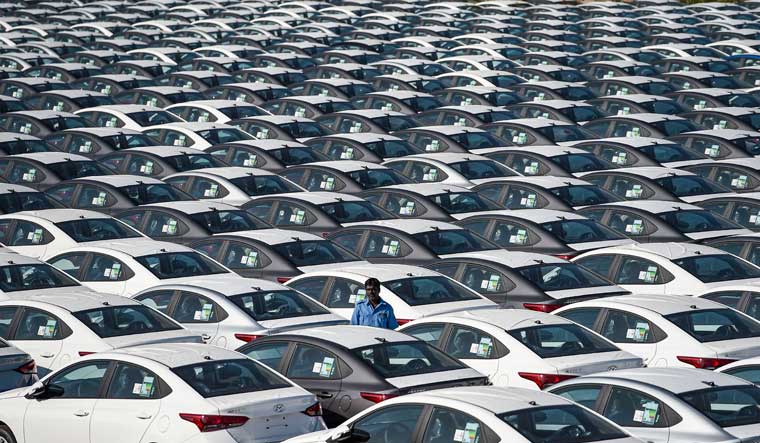The landscape of the sector is poised for a significant transformation as electric vehicles take on a central role.
Currently, Indian manufacturers of auto components are basking in a sense of elation. The previous fiscal year witnessed a remarkable milestone with a total turnover of ?5.6 lakh crore, marking an impressive growth rate of 32.8 percent - the highest ever recorded.
Furthermore, the backdrop of pandemic-induced lockdowns and supply chain challenges has receded, with the impact of the Ukraine conflict having minimal effects. The industry's outlook is optimistic, with several promising prospects on the horizon. This includes a surge in automobile sales and a trend towards larger and more powerful models. This trend is evidenced by the SUV frenzy in the passenger car segment and the growing demand for bikes with engine capacities exceeding 250cc. This is exemplified by recent launches such as Harley Davidson and Triumph, both tailored specifically for the Indian market.
However, a distant rumble of thunder casts a shadow over the horizon, causing concern for all involved. "We've experienced an extraordinary year," remarked Sunjay Kapur, who holds the position of President at the Automobile Components Manufacturers Association of India (ACMA) and serves as the Chairman of Sona Comstar. Yet, he conceded, "We find ourselves in the midst of a profound transformation."
Kapur is, naturally, referring to the sweeping wave of electrification that is sweeping through the automotive industry, necessitating a significant shift in direction for component manufacturers.
"The industry is undergoing disruption. Similar to how vehicle manufacturers (OEMs) are causing disruptions, the components industry will also undergo a disruptive phase," he explained.
The pivotal question is how adeptly the sector is navigating this period of disruption and how well-prepared it is for the ensuing changes. Traditionally responsible for delivering a supply chain of spare parts and complementary technologies to OEMs for conventional internal combustion engines (ICE), the sector is on the brink of a radical transformation as electric vehicles take center stage, as projected to occur within the coming years.
Kapur acknowledges this concern, but he remains unconvinced that it will result in a widespread loss of jobs within the sector. He firmly asserts, "Employment opportunities will actually grow. The nature of these opportunities will transform, rather than their sheer quantity. Hence, the significance of upskilling and reskilling becomes paramount."
Furthermore, officials from ACMA hold the viewpoint that although electric vehicles, with their emphasis on batteries, might disrupt the current delicate equilibrium between component manufacturers and OEMs, this doesn't necessarily have to be the outcome. Given the government's impartial stance on technology, there is room for a multitude of technological pathways alongside internal combustion engines (ICE) and electric vehicles (EVs). This spectrum could encompass diverse technologies ranging from utilizing ethanol as a blended fuel to employing hydrogen fuel cells, as well as hybrid configurations combining various elements.
Kapur expressed his conviction by stating, "I firmly believe that traditional engines will endure."
However, there exists a realm of concern for him, particularly regarding the technological advancement of Indian component manufacturers. He expressed, "Our expenditure on research and development for emerging technologies amounts to merely 1 percent of our turnover, which stands in stark contrast to the global average of 6 to 7 percent."
Another issue that raises his apprehensions is the robust growth projected for the automotive sector in the upcoming years. This growth could reignite the interest of global industry giants in pursuing mergers and acquisitions. This prospect has already sparked alarm within the components sector. For instance, Tesla's communication with central government officials about potentially importing trusted suppliers from China for high-quality spare parts when it commences production in India has caused ripples of concern.
Despite the auto sector's concerted efforts to combat import reliance, the disparity between imports and exports has been steadily diminishing over time. In fact, there was even a surplus of 700 million dollars in the fiscal year 2022-23, which reverted to a surplus of 200 million dollars in the most recent fiscal year. However, the recent inclination towards incorporating enhanced software functionalities, internet connectivity, and various embellishments in new vehicle models has led to a surge in the requirement for electronic components, particularly chipsets. Sunjay Kapur highlighted this challenge by stating, "Electronic components... present a vulnerability for us."





